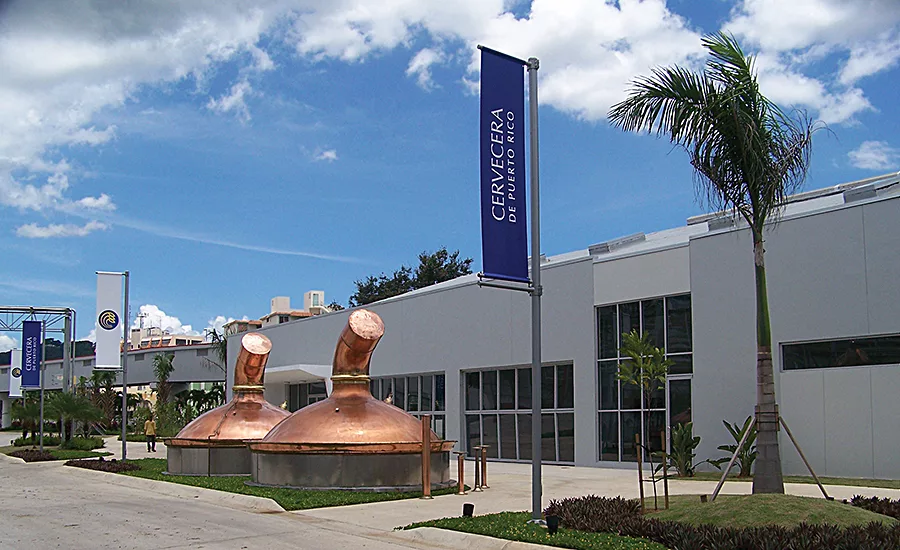Field Reports
Brewing up success
Upgrading a wastewater treatment plant boosts not only environmental standards but production output as well.

Thanks to Cervecera’s state-of-the-art wastewater treatment system, effluent is 100 percent compliant with the facility’s permit, odor problems have been eliminated, sludge is being recycled, and operating costs and power consumption have been reduced. Source: Veolia.
Founded in 1937, Compañia Cervecera de Puerto Rico is the largest beer brewery on the island. The company embarked on a significant modernization and expansion program a few years ago, in part, to introduce its flagship beer, Medalla Light, to the mainland market. New brewing equipment and packaging technology were purchased, resulting in a 60 percent increase in production.
Another critical element in the expansion was increasing the capacity of the existing wastewater treatment plant. Larger hydraulic and organic loadings were making it difficult to meet treatment objectives. Additionally, manual controls and a lack of instrumentation hampered monitoring, frequent maintenance was required, and a large amount of power was needed to operate the facility’s old, inefficient recirculation pumps.
To achieve its goals, Cervecera chose a solution from Veolia Water Technologies based on the supplier’s AnoxKaldnes moving bed biofilm reactor (MBBR) treatment process. Veolia’s design incorporated Cervecera’s existing wastewater treatment tanks, significantly reducing capital costs and providing an expanded, high-efficiency wastewater system without increasing the footprint of the original treatment plant.
The AnoxKaldnes MBBR process consists of a reaction tank filled with biofilm carriers; a sieve assembly to allow the wastewater to flow through while retaining the carriers; and a medium-bubble aeration grid of stainless steel laterals and diffusers. The engineered carriers provide a highly protected surface area that promotes growth of the biofilm that treats the wastewater. An aeration system at the bottom of the reactor provides the oxygen needed for biological activity and sufficient agitation to disperse the carriers throughout the tank. The movement of the carriers in the tank sloughs off any excess biofilm.
From the MBBR, the effluent flows through a mixing pipe flocculator, where coagulants and flocculants are injected and mixed with a recycle flow saturated with air. As the mixture enters the downstream dissolved air flotation (DAF) system, the saturated air comes out of the solution as micro-bubbles, which attach to the effluent particles’ surfaces and cause the solids to float to the top where they are skimmed off. The skimmed solids are automatically removed at set time intervals. The treated water flows over weirs and is continuously discharged. The MBBR system also has eliminated overloaded “dead zones” in the basin that had been the source of the facility’s odor problems. By continuously mixing and controlling the dissolved oxygen levels, the new system ensures quicker, more efficient biological treatment, eliminating odors from the process.
“Veolia’s solution has provided us with a reliable, modern, highly automated facility that is easy to operate and maintain and allows us to continue to be a good neighbor with our host community,” says Marlon Cabrera of Cervecera’s engineering department.
The wastewater effluent is 100 percent compliant with the facility’s industrial wastewater discharge permit, and sludge recovered from the process is recycled as nutrient-rich compost. The upgrade has also lowered power consumption by 35 percent, reducing operating costs and greenhouse gas emissions.
Overall, the upgrade has more than halved the cost of wastewater per 1,000 gallons of effluent, cut maintenance costs by 70 percent and reduced overtime costs.
For more information:
Ryan Johnston, 856-438-1741,
ryan.johnston@veolia.com, www.veoliawaterstna.com.
Looking for a reprint of this article?
From high-res PDFs to custom plaques, order your copy today!


